If searching through old Czech cookbooks, you most likely won’t find a recipe for utopence, although it is a popular Czech pub delicacy with a long tradition. They are basically chubby sausages loaded with pickles and onions in vinegar. In the Czech Republic, everyone makes utopenec themselves, according to their own recipe, usually inherited from their ancestors or obtained from close friends.
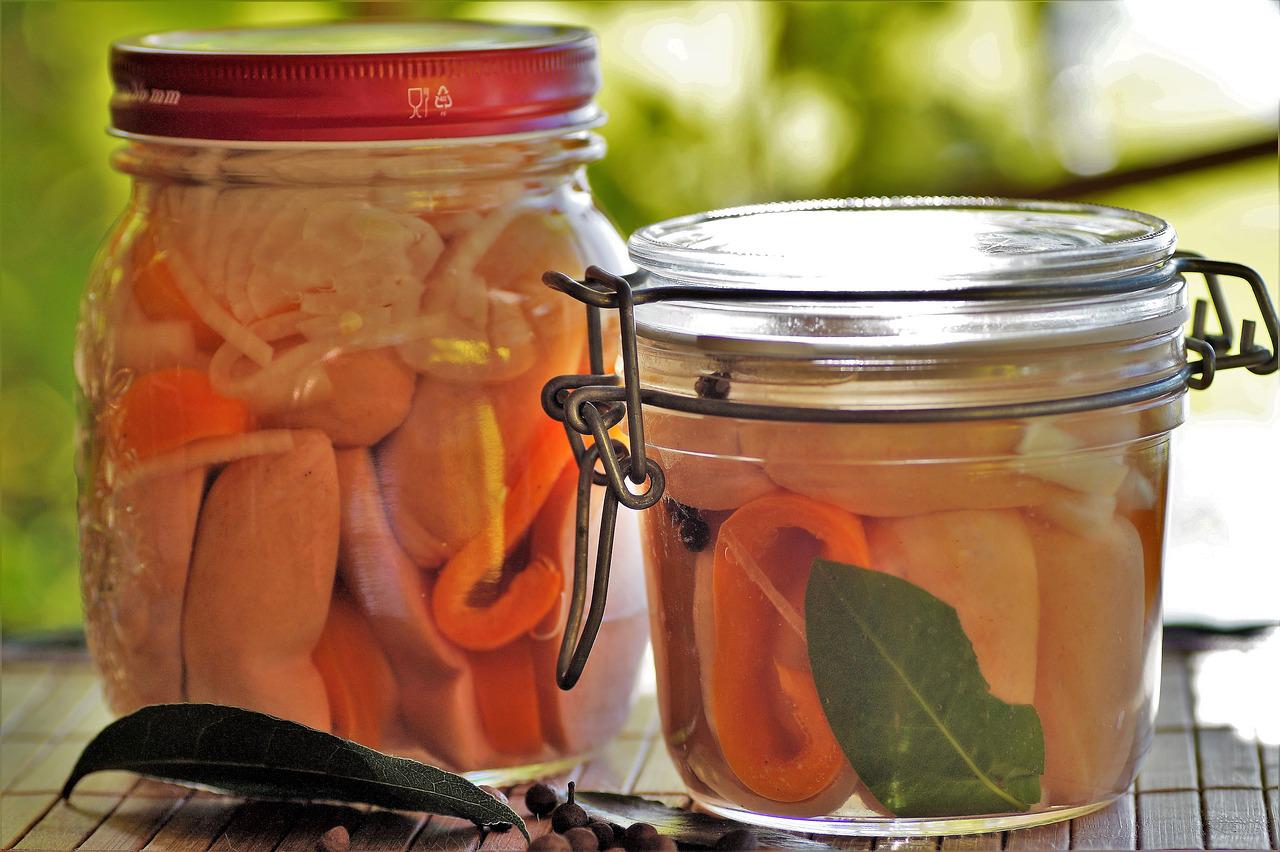
Image by Iva Balk.
History says that utopenci were invented over 100 years ago by a man names Mr. Šamánek. He owned a mill and a pub in the village of Beroun. His delicious fat little pickled sausages were very popular and his pub was famous throughout the entire country.
One day, as legend says, he was outside fixing the wheel on his mill. As irony would have it, he fell into the water, somehow got caught under the mill and drowned.
Yes, we Czechs love black humor and thus the classic utopenci (aka drowned men) was named.
There are plenty of variations for utopenci. I have found that the key is to have very good sausage to begin with. Czechs usually make this with short and fat little sausages called špekáčky.
A špekáček usually contains 50 percent beef, 20 percent pork without skin, and 30 percent fat. Not your healthiest sausage but oh so delicious! It has been seasoned with garlic, pepper and a touch of nutmeg. This is the most popular short fat sausage in the Czech Republic.
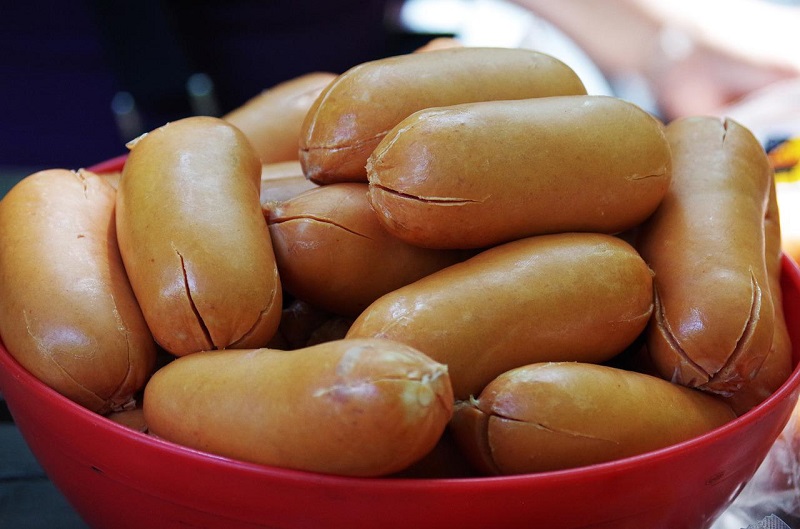
Image by Andrea.
The famous Czech špekáček has been around for over 120 years.
The first written records of it date back to the Agrarian Fair in Prague in 1891. (The General Land Centennial Exhibition was a World’s fair held in 1891 in Prague, then in the Austria-Hungarian Empire.)
The original recipe stressed the importance of using quality meat and strongly respecting the stated amount of fat.
Did I mention that špekáček literally translates as “fattie”?
Yes. 30 percent of pure, delicious, juicy fat.
See the little fat pieces on the interior photo?
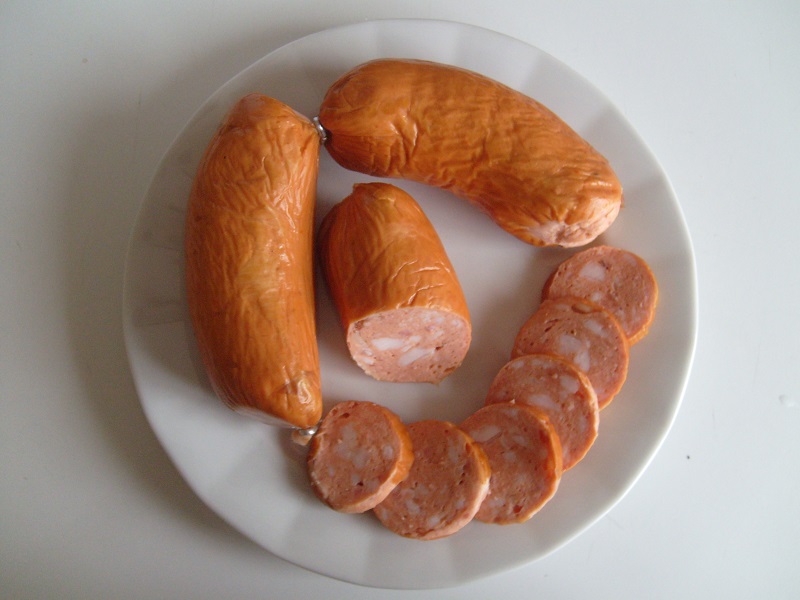
Inner view of špekáčky. Image source: Wiktionary.
Before we get into the recipe, keep the following in mind. When you are out shopping in the USA or Canada and looking for a sausage to make this with, remember that the traditional špekáček was meant to contain 50 percent rump beef, 20 percent pork without the skin and 30 percent fat. It was also seasoned with garlic, pepper and a touch of nutmeg.
Read the ingredients and come as close as you can. I am lucky we have numerous European markets close by so I can come pretty close. Google ‘European Market’ in your area and call ahead to see if they carry imported sausages. Some Italian markets have a close sausage, but check the spices – you don’t want basil or oregano as it won’t taste Czech.
Fun fact: In 2011, the špekáček was placed on the European Commission’s list of traditional Czech specialties!
Originally, utopenci were not spicy so you can leave out the chili – or if you like that extra kick, add them.
The recipe is quite basic.
I will list the main ingredients. After that you can use your imagination to adjust to your own taste buds.
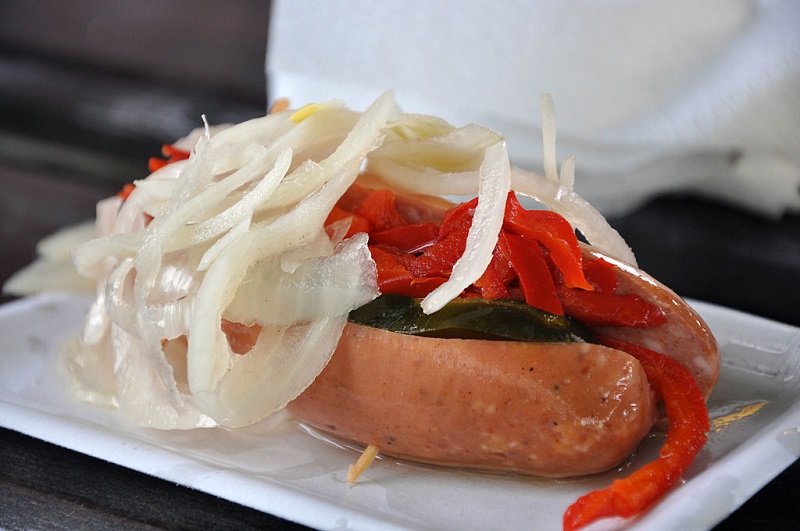
Photo source: Wikipedia.
I am listing ingredients to fill two 16 ounce Ball canning jars.
Must Have Ingredients
- 8 fat little sausages (I can fit 4 to a jar with the ones I buy)
- 3 onions cut into thin slices
- 14 ounce can (or jar) of red pimento peppers, cut into thin slices
- 4 quality pickles (Polish pickles)
- 16 whole peppercorns
- 10 whole allspice
- 8 bay leaves
- 1 tsp. salt
- 2 tsps. sugar
- 1/2 to 1 cup vinegar (depending on how vinegary you like it)
- 28 ounces of water
Possible Additional Ingredients
- garlic (whole or sliced)
- mustard (spread inside sausage) or mustard seeds
- horseradish
- Worcester sauce
- olives
- hot (spicy) peppers
- carrots
- cherry tomatoes
- sauerkraut
Directions
Mix the water, vinegar, salt, sugar and the spices and bring them to boil. Boil them for 3 minutes and then let the liquid cool a bit.
Peel the sausages. If you don’t peel them, you’ll be pickling them for a month before they even have any taste! You want them to soak up the flavors.
Cut or slice the sausages (see video below). Some people cut them lengthwise so they can pack them with the goodies, others make slices – personal preference. If you go lengthwise, you can smear the middle with spicy mustard and fill the cut with a slice pickle and pepper. If you like, you can prick them with a longer toothpick to hold the halves together.
The most important thing is that all of the meat and vegetables must be fully submerged in the liquid.
Seal the jar and let your ‘drowned men’ rest for 10 days to 2 weeks in a cold and dark place.
I live in humid Florida, so leaving them out is not a possibility and they do just fine sitting in the back of the fridge.
If you can’t wait any longer, you can eat them in one week – but two weeks is the proper amount of time to cure the flavors.
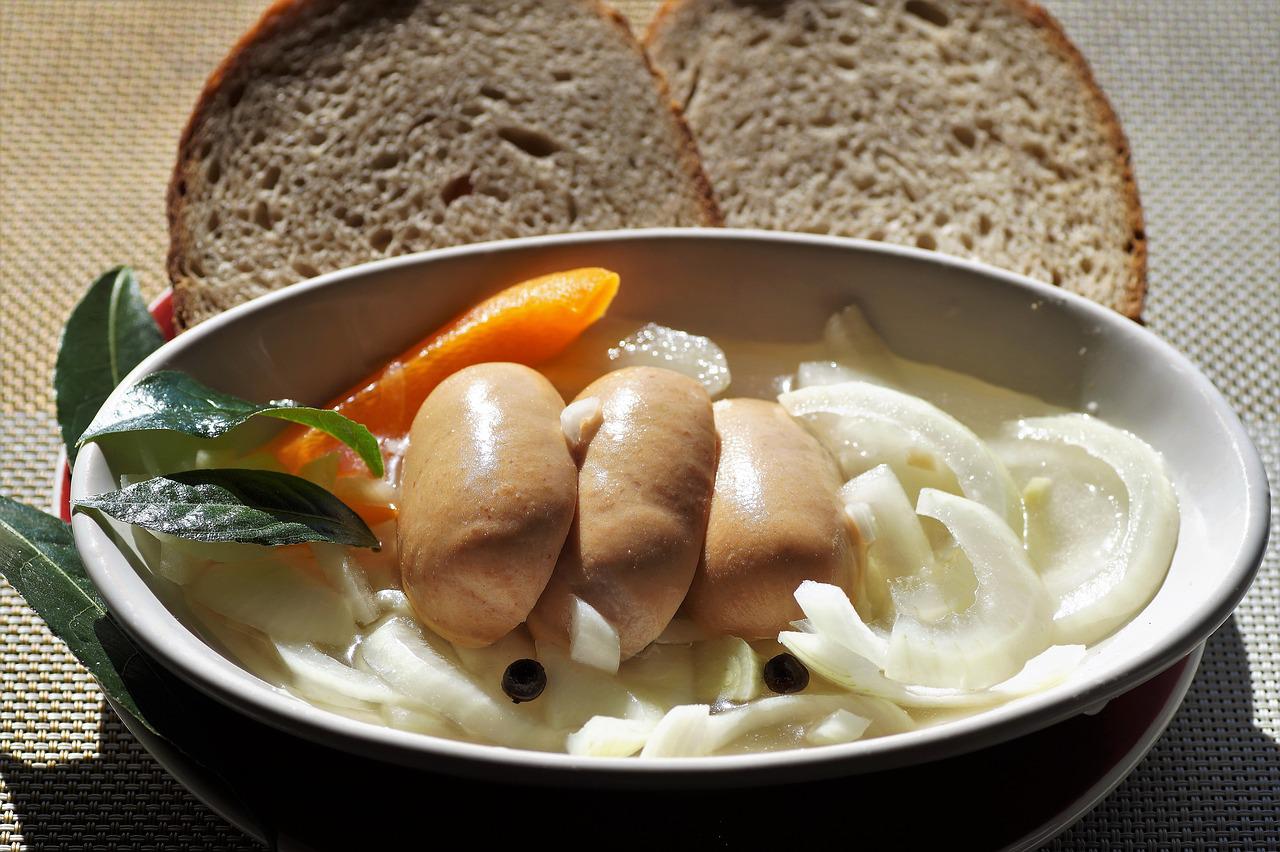
Image by Iva Balk.
Here’s a short 1.5 minute video showing the different methods for putting the little fatties into jars.
You have under two minutes to watch, right?
Traditionally, you serve these with a nice rye or rustic bread and plenty of delicious Czech beer!
Below are a few images from Instagram of this delicious Czech pub food.
First, we see a delicious pile up of pure goodness.
View this post on Instagram
Note this user added some different pepper variations.
It looks spicy!
View this post on Instagram
This chef made his with red onions.
He also serves it up plated like a fattie sausage salad.
I like it.
View this post on Instagram
Call me old school or a traditionalist but this is exactly how I like it.
Simply plop it on a cutting board right out of the jar!
Serve it with a great Czech lager and delicious Czech rye!
View this post on Instagram
What’s this?
This may be even better…
Served with a dark, rich Czech black beer!
Kozel!
View this post on Instagram
Delicious!
And a true Czech pub classic!
View this post on Instagram
Are you inspired yet?
I know I am!
View this post on Instagram
Didn’t those images just make your mouth water? (Unless you’re a vegetarian, in which case you’d be more inclined to enjoy the other Czech pub classic, Marinated Czech Cheese (Nakládaný Hermelín). If you’d like me to post a recipe for that in the future, let me know in the comments below.
The špekáček has been a part of my life since childhood, as it is with most Czechs. Believe me, it is much more than just a sausage. Once you have tasted a špekáček, you will crave the taste for the rest of your life – whether roasted on a stick by the campfire or as a drowned man in a jar.
Here’s a juicy little fattie roasting over a fire.
This is a site that certainly many Czechs can both smell and taste just when seeing this photograph!
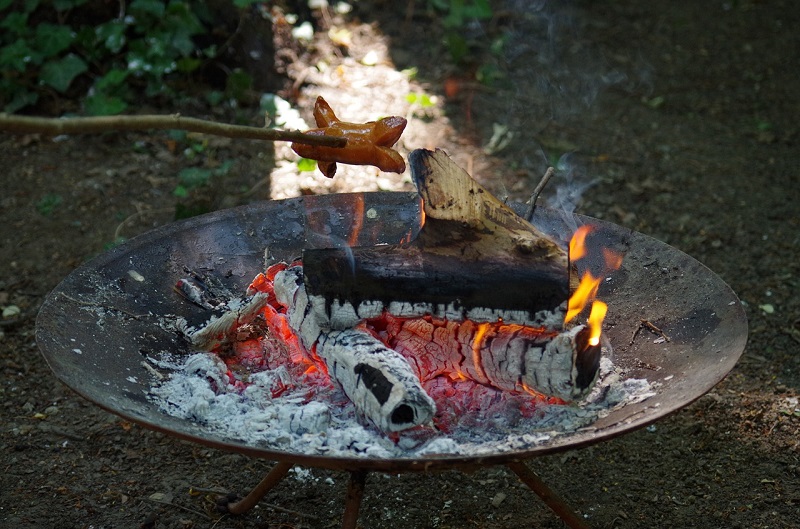
Image by Andrea.
Dobrou Chut!
The provided excerpt offers just a glimpse into the extensive article. To unlock the full content, become a Patreon patron. Our team meticulously gathers and curates valuable information, sparing you hours, days, or even months of research elsewhere. Our goal is to streamline your access to the best of our cultural heritage. However, a portion of the content is locked behind a Patreon subscription to help sustain our operations and ensure the continued quality of over 1,200 pages of our work.
Alternatively, you can contribute through Venmo, PayPal, or by sending cash, checks, money orders. Additionally, buying Kytka’s books is another way to show your support.
Your contribution is indispensable in sustaining our efforts and allows us to continue sharing our rich cultural heritage with you. Remember, your subscriptions and donations are vital to our continued existence.



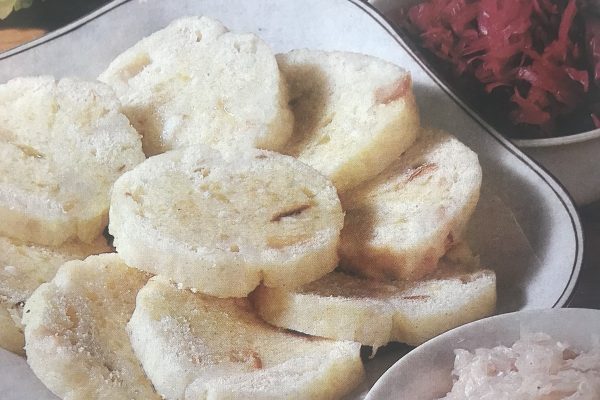
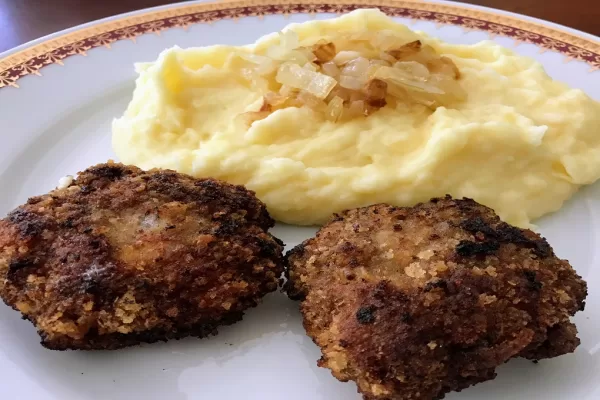















Gonna make these tonight so they’re ready for the game in 2 weeks.